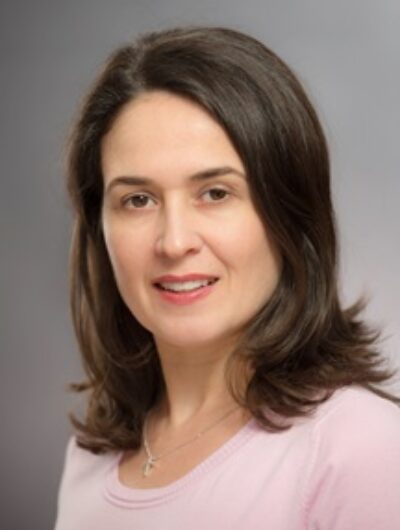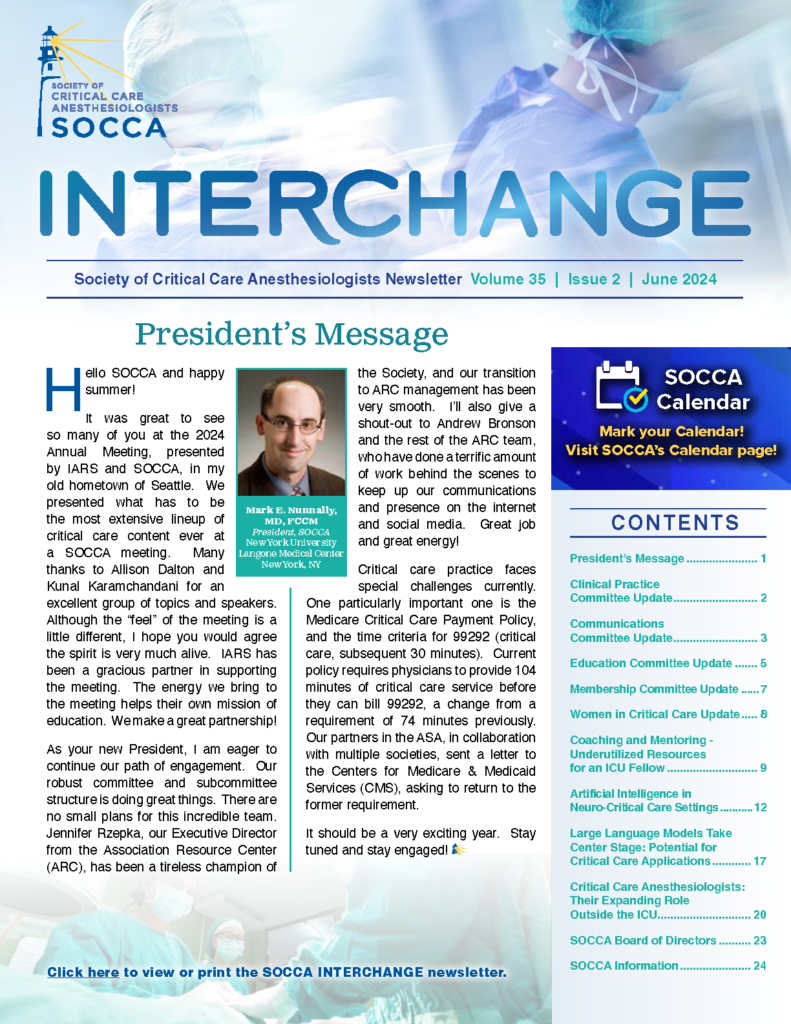Personal reflections of the COVID-19 pandemic and professional development in Anesthesiology Critical Care
The biting cold winter in Minnesota did not feel any different in January, 2020, but for the news wildly circulating over the internet, television, radio, and social media of a novel coronavirus spreading in the Chinese city of Wuhan, which would later be termed SARS-CoV-2. Everywhere else, people continued their life with minimal worry. In the new millennium, other potential pandemic threats related to SARS (2003), H1N1 (2009), MERS (2012), and Ebola (2014-2016) were readily managed with routine infectious disease principles and did not disrupt our life to any significant extent. The medical community was able to handle or extinguish those contagious outbursts at the local or regional level.
But by February 2020, COVID-19, the disease caused by SARS-CoV-2, erupted in the Italian province of Lombardy, triggering a temporal lockdown. Despite these measures, COVID-19 continued to spread around Europe and the entire globe. Country after country failed to contain the virus, overwhelming the unprepared international medical community to the point that the World Health Organization (WHO) declared a pandemic on March 11, 2020.
Meanwhile, my family just returned from a sunny vacation abroad at the beginning of March, where we were largely disconnected from the media and the evolving crisis. Upon my return, the first week in the ICU hurled me into the mix of rapidly changing COVID information. Less than a week from the WHO announcement of the COVID-19 pandemic, executive orders from the Governor of Minnesota mandated a lockdown, and the regional M-Health medical system halted all elective operations to reduce use of personal protective equipment (PPE) and reserve supplies for emergency surgery. Catapulted into the unknown, we confronted the uncertainty with a mixture of determination and anxiety. The apprehension of the medical and lay community grew exponentially. The lack of understanding of this disease, along with insufficient PPE and medical supplies, generated feelings of loss of control and stress about our well-being. At home, we felt trapped. At work, we felt insecure. Outdoors we felt safe but isolated. The community support gradually turned guarded by social distancing. The masks covered smiles, the voices sounded muffled, and touching was prohibited. Most clinicians experienced stages of grief at various cadences, vacillating between denial, anger, bargaining, depression, and acceptance.
The University of Minnesota Medical Center is part of the M-Health Medical system, including 12 adult (and one pediatric) hospitals. We received daily emails from our M-Health enterprise command leadership for most days April, May, and June. New policies were issued, and guidelines were written and updated frequently. The pace of change was dizzying. Representatives and members of our Department of Anesthesiology became actively involved in the operating room (OR), the Intensive Care Unit (ICU), and our system-wide response planning. Gradually the system email frequency became twice weekly and subsequently weekly. Our Anesthesiology department's chair, Dr. Michael H. Wall, prioritized open communication, team cohesion, and personal safety throughout numerous ‘Zoom’ staff meetings for faculty, trainees, nurse anesthetists, and administrative support personnel. The staff meetings offered ample opportunities to address questions.
By May, the focus transitioned to reopening plans. Delayed surgical procedures were now becoming urgent. We gradually resumed most surgical operations by mid-May. Surgical leadership created various tiers of patient interventions to prioritize patient needs. Meanwhile, the immediate and profound financial impact of COVID on surgical case volumes, hospital cash flow, and individual compensation became evident.
The month of July returned with the hope of a seasonal decrease in the number of COVID-19 cases. This proved partially true. The summer also brought new physical fatigue as we scrambled to resume “normal operations” with very abnormal procedures and practices. Leadership prioritized personal and institutional resilience. The frequency of staff meetings decreased over time, as we felt safer at our workplace and our clinical operations increased to near normal activity. Nevertheless, everyone's professionalism was challenged on many fronts. Our patients and our health care providers were confused by erratic COVID testing procedures and results. Some personnel got sick; however, most of us did not. The proper use of protective equipment and infection prevention rules worked for most of us. But as in pandemics of the past, nurses were most vulnerable and bore the brunt of COVID exposures at work.
What about psychological and emotional factors? The stoic medical community tends to deny burnout and intrinsic stress. This time the anxiety and trauma were undeniable; we had to learn to express our fears, confusion, and recognize the early signs of burnout. Each individual experience was unique, and yet there was a pervasive sense of community. Sometimes we felt anger. Nevertheless, compassion towards others and ourselves remained paramount. At the University of Minnesota, our Anesthesiology and Psychiatry Department joined forces and started a “battle buddy” program to enhance peer support, beyond just relying on friends and family.1 Our department is fortunate to have a well-established wellness committee covering key components even before the COVID-19 pandemic. This wellness committee became more active. However, some of us felt overwhelmed and showed meeting fatigue. The medical community, in general, sought to write and read more well-being literature. Authors concentrated on recurrent terms such as burnout, resilience, wellness definitions, and the quest for solutions.2 Yoga instruction and cooking classes were not going to be sufficient to cope with COVID.
In this volatile climate, some found prolific ground for academic endeavors and medical research. I toil in the mid-career category aspiring for promotion. While my clinical reputation, education curriculum accomplishments, mentorship for residents and fellows, administrative obligations, services for local and national society committees, invitations to speak at local, national and international professional courses and conferences, and global health involvement are all significant, I am challenged with sufficient peer-reviewed scientific publications. This conundrum is well-known in the academic environment. Although I remain determined, I occasionally feel overwhelmed with the expectations and academic demands. I ruminate about current barriers to publishing more. I wonder why I was more successful both before my Anesthesiology residency in the US and during residency and fellowship training, but now seemingly less so as an Assistant Professor in Anesthesiology and Critical Care. Perhaps being an international medical graduate did not help my academic career launch since I had to do my residency and fellowship twice, first in Romania and the second time in the USA. Why is my stamina losing momentum?
Publishing in extenso manuscripts is a challenge for many researchers, with a non-publication rate of registered clinical trials as high as 27-66%, and rare disease studies remaining mostly unpublished.3,4 On the other hand, many journals expedite the review and publication of COVID-19 research and make them readily available online.5 It is therefore no wonder why some authors emphasize the requirement of rigorous research methodology and peer review during the pandemic, regardless of the medical community's urgent needs.6 There is an intrinsic desire we have to understand and tackle the COVID-19 disease that poses so many risks to our lives and well-being as a global society. Indeed, in a recently published correspondence, a group of researchers pleaded for a scientific consensus regarding the COVID-19 pandemic.7
Meanwhile, my inherent desire to participate continues. The University of Minnesota IRB approved my COVID-19 predictive model study at the end of April. I received access to two comprehensive clinical databases that will require programming, coding, mathematical analysis, besides statistics. These tasks seem challenging and complicated. How can I make a difference and be accurate at the same time? I chose to collaborate with a group of researchers from our University with various backgrounds in surgery, internal medicine, critical care, pathology, health care informatics, statistics, and infectious diseases. We meet via video chat, communicate electronically, share ideas, write together, keep each other accountable, and critique our work. We want to keep the momentum going with positive energy as a community.
My hope for solid progress has been restored, and I see a fruitful and rewarding academic future again. Thank you, my medical community companions, for struggling together and bringing positive resilience to this challenging time. I believe that the COVID-19 pandemic challenge will teach us wisdom on many levels, professionally and spiritually.
Acknowledgments:
Richard C. Prielipp, MD, MBA
Professor of Anesthesiology, University of Minnesota Medical School
References
- Albott CS, Wozniak JR, McGlinch BP, Wall MH, Gold BS, Vinogradov S. Battle Buddies: Rapid Deployment of a Psychological Resilience Intervention for Health Care Workers During the COVID-19 Pandemic. Anesth Analg. 07 2020;131(1):43-54. doi:10.1213/ANE.0000000000004912
- Khan A, Vinson AE. Physician Well-Being in Practice. Anesth Analg. Nov 2020;131(5):1359-1369. doi:10.1213/ANE.0000000000005103
- Al-Durra M, Nolan RP, Seto E, Cafazzo JA, Eysenbach G. Nonpublication Rates and Characteristics of Registered Randomized Clinical Trials in Digital Health: Cross-Sectional Analysis. J Med Internet Res. 12 2018;20(12):e11924. doi:10.2196/11924
- Rees CA, Pica N, Monuteaux MC, Bourgeois FT. Noncompletion and nonpublication of trials studying rare diseases: A cross-sectional analysis. PLoS Med. 11 2019;16(11):e1002966. doi:10.1371/journal.pmed.1002966
- Science in the time of coronavirus. Nat Methods. 04 2020;17(4):355. doi:10.1038/s41592-020-0807-y
- London AJ, Kimmelman J. Against pandemic research exceptionalism. Science. May 2020;368(6490):476-477. doi:10.1126/science.abc1731
- Alwan NA, Burgess RA, Ashworth S, et al. Scientific consensus on the COVID-19 pandemic: we need to act now. Lancet. Oct 2020;doi:10.1016/S0140-6736(20)32153-X




































